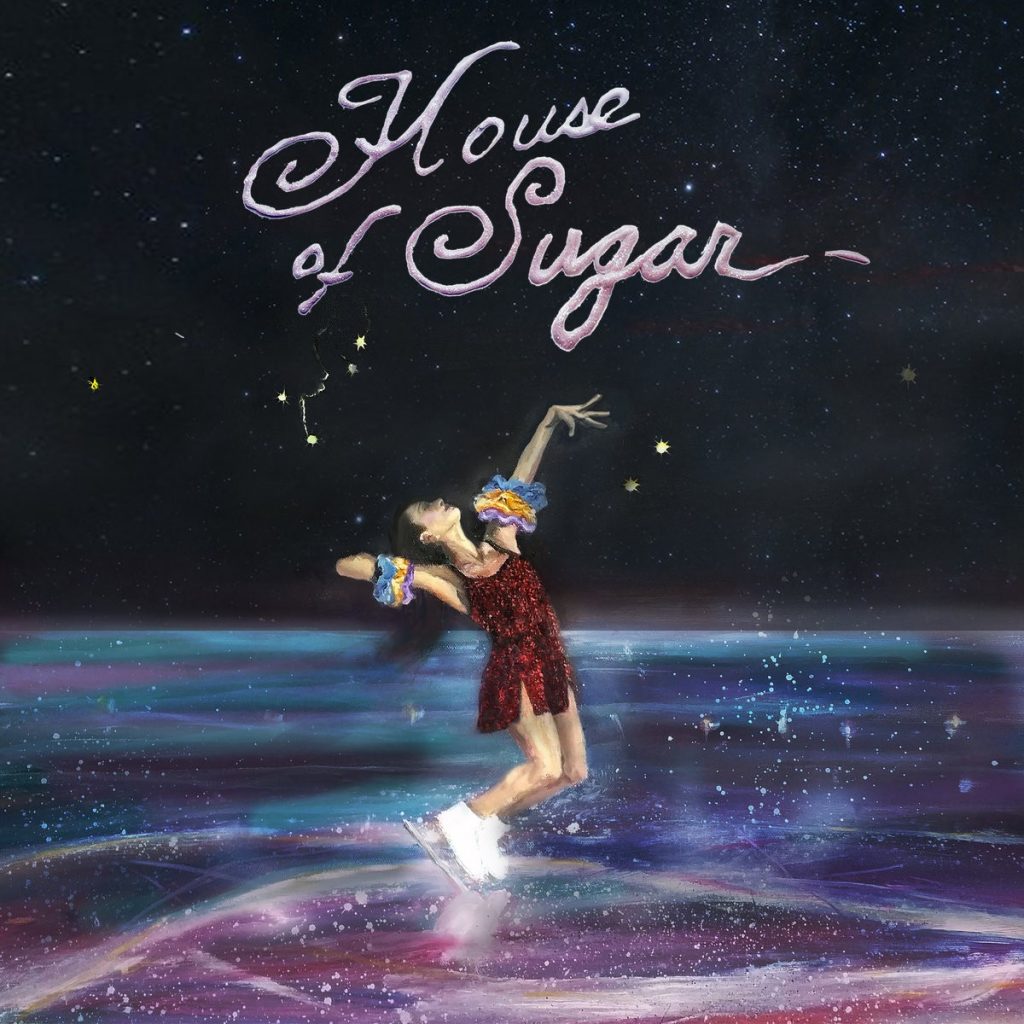What does the candy house of the Brothers Grimm’s “Hansel and Gretel” have in common with a riverfront Philadelphia casino? Both are houses of sugar and stops on (Sandy) Alex G’s recently crafted journey into the natures of gluttony, desire and dependence.
“House of Sugar,” aptly released on Friday, Sept. 13, is the newest album from 26-year-old Alex Giannascoli, whose gutsy sonic palette has resulted in eight vastly different studio LPs. “Beach Music,” his first release with Domino Recording Company in 2015, gave his storytelling prowess and Elliot Smith-style vocals a darkly fantastical, pitch-shifted makeover, while “Rocket,” in 2017, honed in on roots-rock and country flavors years before “yeehaw” culture entered the indie consciousness. Giannascoli’s latest confidently blends all these elements in his most polished album to date, as imaginative and singular as ever.
“House of Sugar” sticks to Giannascoli’s most recently developed sonic trademarks with the help of frequent collaborators, old friend Emily Yacina and girlfriend Molly Germer, supplying vocals and violin, respectively. “Southern Sky” melds its clanging, disjointed piano introduction into a melodically beautiful, but deceptively creepy folk tune. “Gretel,” wherein the album’s title is sung amid a foreboding cacophony of bells and whistles, and the percussive, twangy “Bad Man” create similar effects. As per usual, Giannascoli balances his eccentricities with catchy hooks and plenty of heart, opting for more conventional formats on tracks like “Hope” and “Cow.” “House of Sugar” is not as stylistically cohesive as some of his other albums — he takes a sharp turn halfway through with the hypnotic “Near” and glitchy “Project 2,’’ two tracks reminiscent of his recent work with electronic producer Oneohtrix Point Never. The album’s ominous climax, “Sugar,” could easily soundtrack some scene of backcountry violence in a Western or horror film, and the closer, “SugarHouse,” a Springsteen-style live cut complete with wistful saxophone solos, is sure to throw fans for a loop. It’s a perfect aesthetic match for the album art, a figure skater under the stars that could grace the cover of a pithy young adult paperback circa 1985.
Sugar, with its production historically reliant on American slavery, functions easily as a shifting symbol in Giannascoli’s dreamscape of twisted Americana. His native Philadelphia was a hub for sugar refinement in the 19th and early 20th centuries — in fact, the SugarHouse Casino for which the closing track is named was built on the site of an old sugar refinery. In a recent interview with The FADER, Giannascoli touched on the album’s dealings with gluttony: “Everything that I do, and everything that everyone does — you’re just gobbling up everything around you.” “Taking” and “Bad Man” point to literal indulgence as their narrators devour a “spoonful of sugar” and a “pillar of fat.” Giannascoli’s alternate universe “Gretel” leaves her brother to die in the witch’s house, momentarily tempted back not by guilt, but by the prospect of eating more candy — “It’s calling me back / House of sugar.” Like most (Sandy) Alex G records, the album is rife with spellbinding repetition, evidenced by the mournful opener “Walk Away” (“Someday I’m gonna walk away from you / Not today”) and the obsessive “Near” (“All I want is to be near you”). Both evoke the pull of an addiction. Other elements, like the recurring image of flame-colored skies in “Southern Sky,” “Bad Man” and “Cow” are tied less clearly to metaphor, but serve nonetheless to immerse listeners in the idea of a warped frontier.
“House of Sugar” depicts pieces of Giannascoli’s life alongside his fiction, peppering the track list with returns to reality. “Hope,” named for a street the songwriter used to live on, earnestly tells the story of a roommate’s fatal overdose. “In My Arms” brings the recurring topic of impulse control to a familiar context as he sings, “You know good music makes me wanna do bad things.” In the tender, sweet “Cow,” “you big old cow” becomes a term of endearment as the narrator gorges himself not on sugar or roulette, but on love. In these three gentler tracks, which describe a scene of comfort, dreams of gentle admonishment from the sea and Giannascoli himself honoring a fallen friend, he shares a glimpse not only of transgression, but of salvation.
Unlike most fairy tales, “House of Sugar” denies its listeners an explicit moral. Giannascoli’s work is generally less about takeaway than atmosphere, far easier experienced than explained. When “SugarHouse” brings us at last to the casino, a classic symbol of vice and an otherworldly landscape in its own right, our narrator’s language is rife with clichés, kissing dice and calling bluffs. The last lines though, leave us with a cliffhanger, another nursery rhyme touched by dark magic: “I won’t be forgotten / Let ‘em bury me in the sand / When our children go digging for answers / I hope they can put me together again.”



